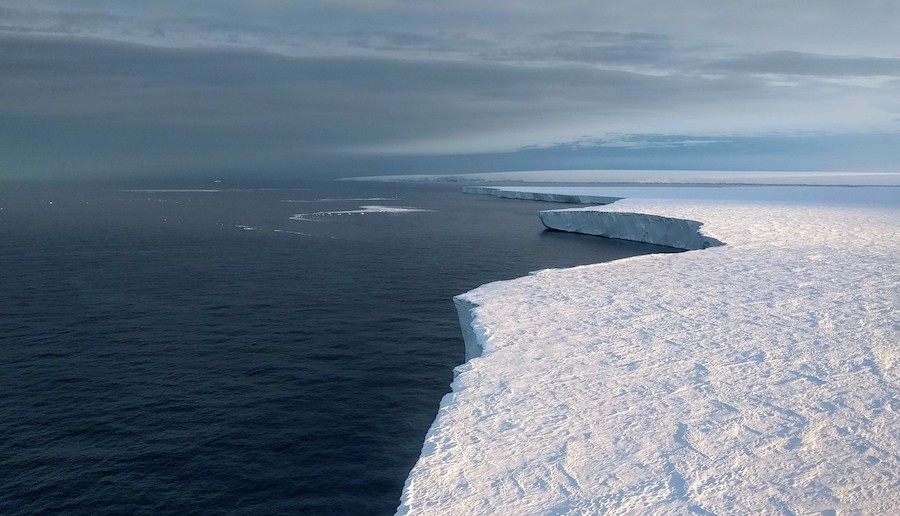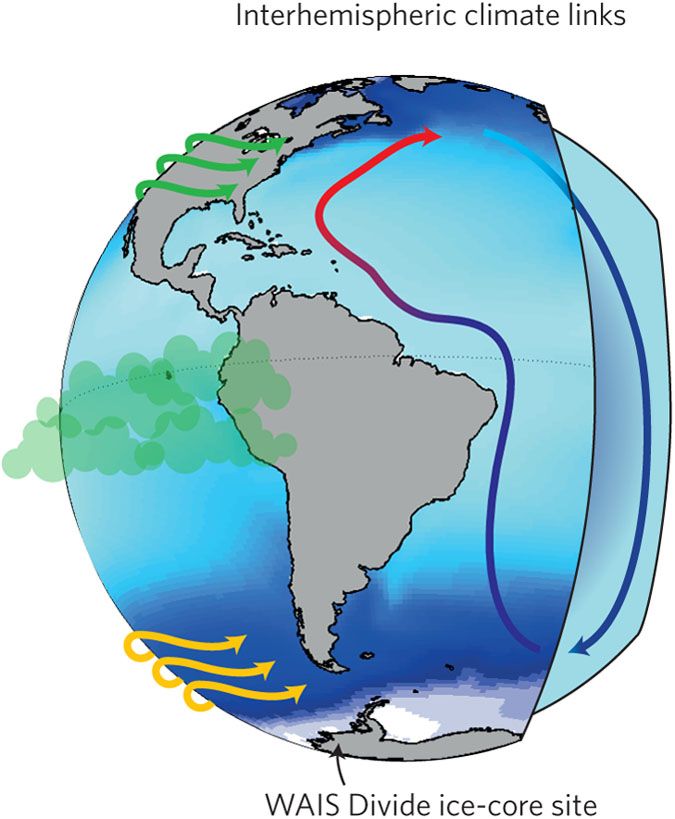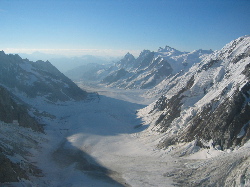A FEW SELECTED PUBLICATIONS
Journal names are hyperlinks. Complete list on my CV (or try Google Scholar).
O'Connor GK, Holland PR, Steig EJ, Dutrieux P, Hakim GJ. Characteristics and rarity of the strong 1940s westerly wind event over the Amundsen Sea, West Antarctica. The Cryosphere 17: 4399–4420 (2023).
Dütsch M, Steig EJ, Blossey PN, Pauling AG. Response of water isotopes in precipitation to a collapse of the West Antarctic Ice Sheet in high-resolution simulations with the Weather Research and Forecasting Model. Journal of Climate 36: 5417-5430 (2023).
Holland PR, Bracegirdle TJ, Dutrieux P, Jenkins A, Steig EJ. Climate forcing of the West Antarctic Ice Sheet: anthropogenic trends and internal variability. Nature Geoscience 12: 718-724 (2019).
Markle BR, Steig EJ, Buizert C, Schoeneman SW, Bitz CM, Pedro J, Ding Q, Sowers T. Global atmospheric teleconnections during
Dansgaard-Oeschger event Nature Geoscience 10: 36-40 (2016).
Steig EJ, Huybers K, Singh HA, Ding Q, Frierson DMW, Popp T, White JWC. Influence of West Antarctic Ice Sheet collapse on
Antarctic surface climate. Geophysical Research Letters 42:
4862-4868 (2015).
WAIS Divide Project Members. Precise interpolar phasing of abrupt climate change during the last ice age. Nature 520: 661-665 (2015).
Steig EJ, Gkinis V, Schauer AJ, Schoenemann SW, Samek K, Hoffnagle J, Dennis KJ, Tan SM. Calibrated high-precision
17O-excess measurements using cavity ring-down spectroscopy with laser-current-tuned cavity resonance. Atmospheric Measurement Techniques 7: 2421-2435 (2014).
Steiger N, Hakim G, Steig EJ, Battisti DS, Roe G. Assimilation of
time-averaged pseudoproxies for climate reconstruction. Journal
of Climate 27: 426-441 (2014).
Dutrieux P, de Rydt J, Jenkins A, Holland PR, Ha HK, Lee SH, Steig EJ, Ding Q, Abrahmansen EP, Schröder M. Strong sensitivity of Pine Island ice shelf melting to climatic variability. Science 343: 174-178 (2014).
Steig EJ, Ding Q, White JCW, Küttel M, Rupper SB, Neumann TA, Neff
P, Gallant A, Mayewski PA, Taylor DC, Hoffmann G, Dixon DA, Schoenemann S,
Markle B, Schneider DP, Fudge TJ, Schauer AJ, Teel RP, Vaughn B, Burgener
L, Williams J, Korotkikh E. Recent climate and ice-sheet change in West
Antarctica compared to the past 2000 years. Nature
Geoscience 6: 372-375 (2013).
Schoenemann SW, Schauer AJ, Steig EJ. Measurement of SLAP2 and GISP
δ17O and proposed VSMOW-SLAP normalization for
δ17O and 17Oexcess. Rapid
Communications in Mass Spectrometery 27: 582-590 (2013).
Neff PD, Steig EJ, Clark DH, McConnell JR, Pettit EC, Menounos B.
Ice-core records of net snow accumulation and seasonal snow chemistry
at a temperate-glacier site: Mount Waddington, southwest British Columbia,
Canada. Journal
of Glaciology 58: 1165-1175 (2012).
Steig EJ, Ding Q, Battisti DS, Jenkins A. Tropical forcing of
circumpolar deep water inflow and outlet glacier thinning in the Amundsen
Sea Embayment, West Antarctica. Annals of
Glaciology 53: 19-28 (2012).
Hastings MG, Jarvis JC, Steig EJ. Anthropogenic impacts on nitrogen
isotopes of ice-core nitrate. Science
324: 1288 (2009).
Steig EJ, Schneider DP, Rutherford SD, Mann ME, Comiso JC, Shindell DT.
Warming of the Antarctic ice sheet surface since the 1957 International
Geophysical Year. Nature
457: 459-462 (2009).



